A summary of the results from an ongoing concussion study.
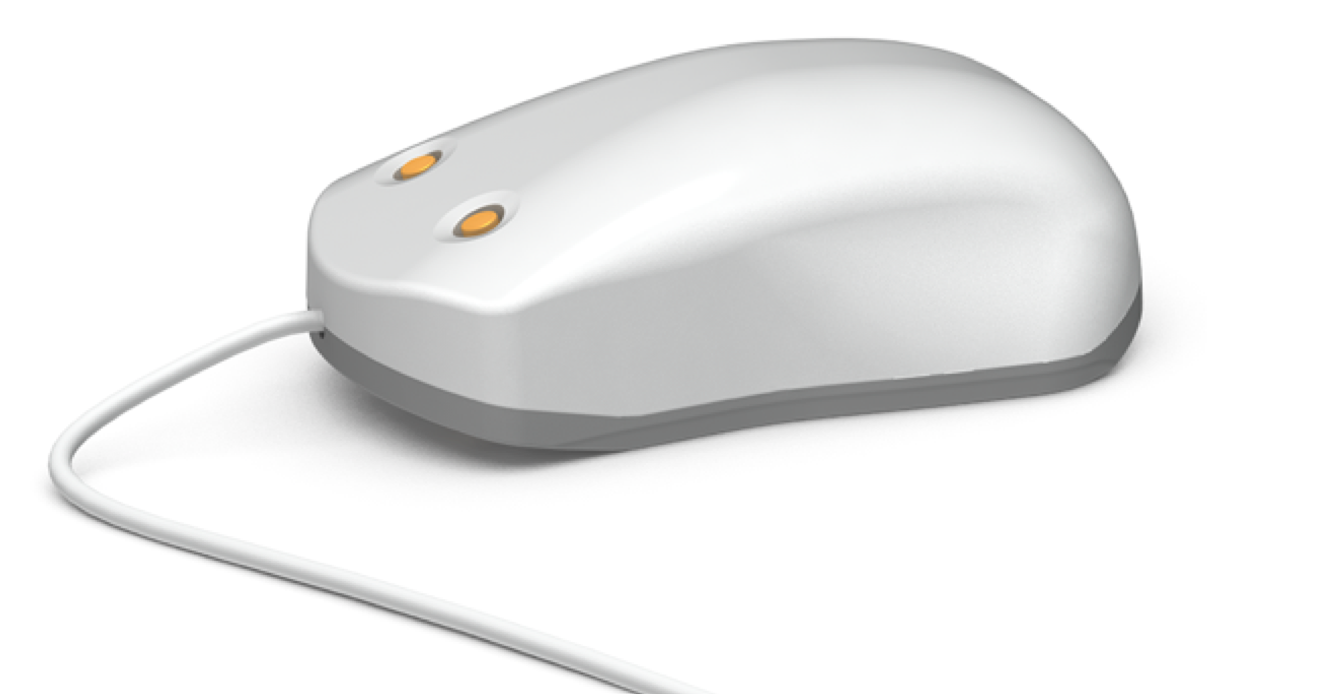
Summary of previous report: Our brain health assessment system is composed of a test device (the Brain Gauge; above) and a number of tests that task different mechanisms of information processing (e.g., lateral inhibition, adaptation, feed-forward inhibition, neuron-glial interactions). The results of these tests are then used to generate an overall performance score (or cortical metric). Sports concussion studies using this technology and protocols have established efficacy for detecting mTBI and tracking its recovery, demonstrating a 99% confidence level (p<0.01) for differentiating individuals with and without mTBI (no baseline measures required). ROC analysis (figure below) demonstrates that the method is highly accurate for tracking recovery (AUC=0.979).
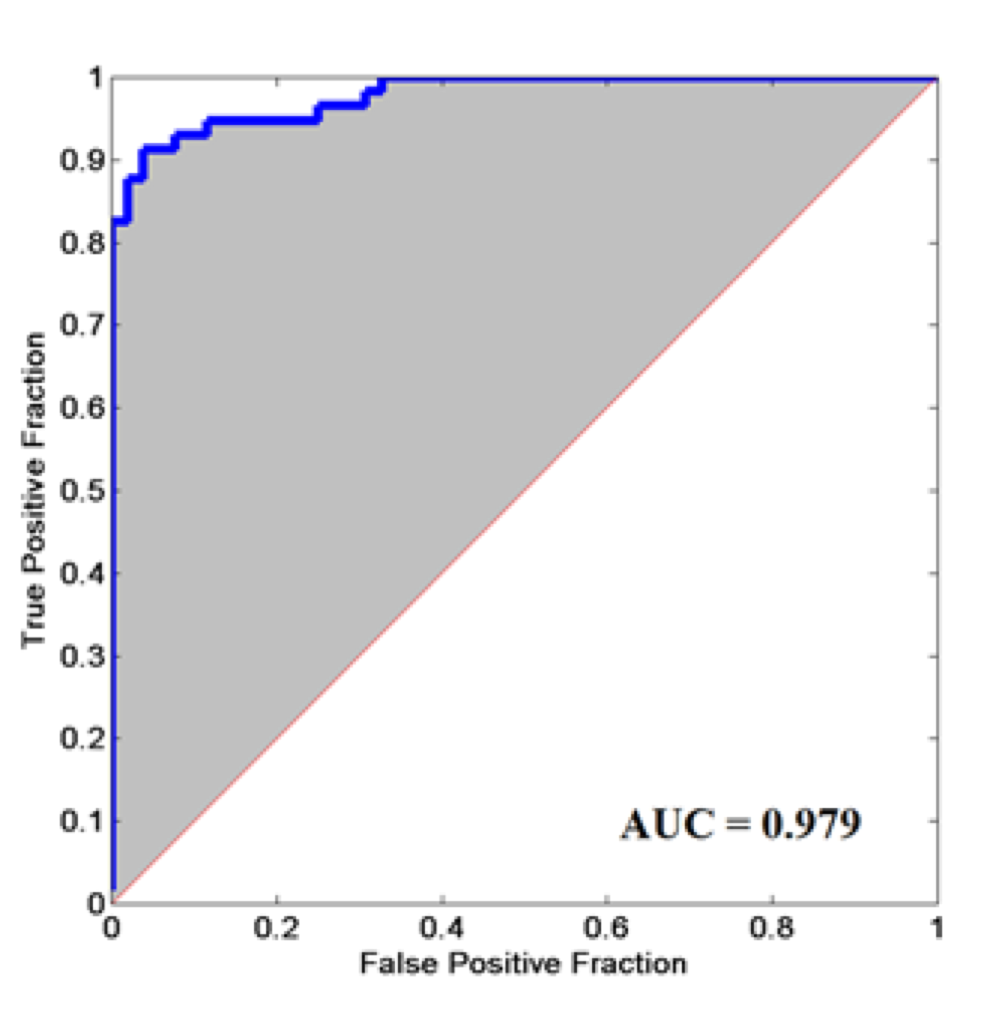
It is of note that although some of the test scores individually had relatively low AUCs (around 50%) and appeared to be insensitive to concussion, combining these metrics into the overall cortical metric score resulted increasing accuracy significantly. In other words, because of the heterogeneity of the concussion population, it is important to deliver multiple tests that task different mechanisms in order to get a complete CNS profile.
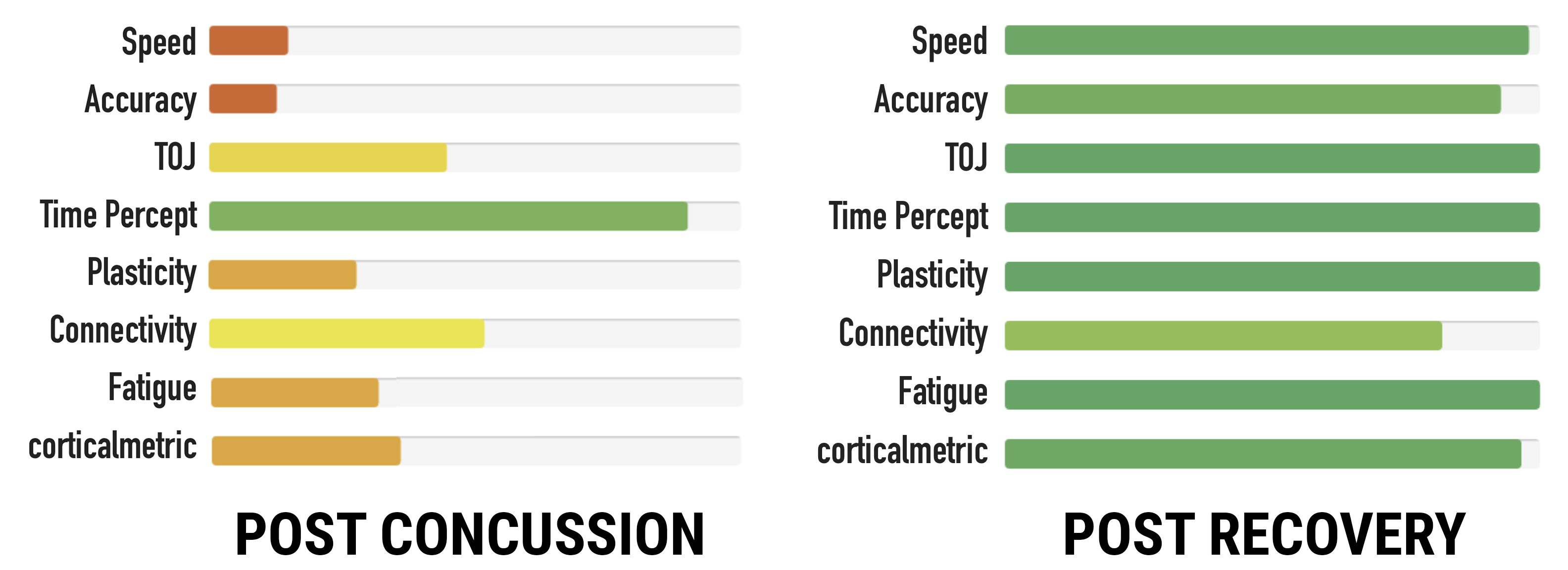
Time Course of corticalmetrics
The time course of cortical metrics reveals that the different mechanisms of information processing are impacted in a time dependent manner post-injury. Consistent with a large body of research on TBI, these metrics demonstrate sensitivity to the different pathobiological processes that are changing post-insult. Note that the first cortical metric (higher numbers in the graphs below indicate worse performance) shown below on the left – initially sensitive to traumatic insult – recovers fairly rapidly while other metrics actually get worse several days later. This is consistent with what many health care providers observe – that concussion symptoms often get worse 2 to 3 days after the concussive event.
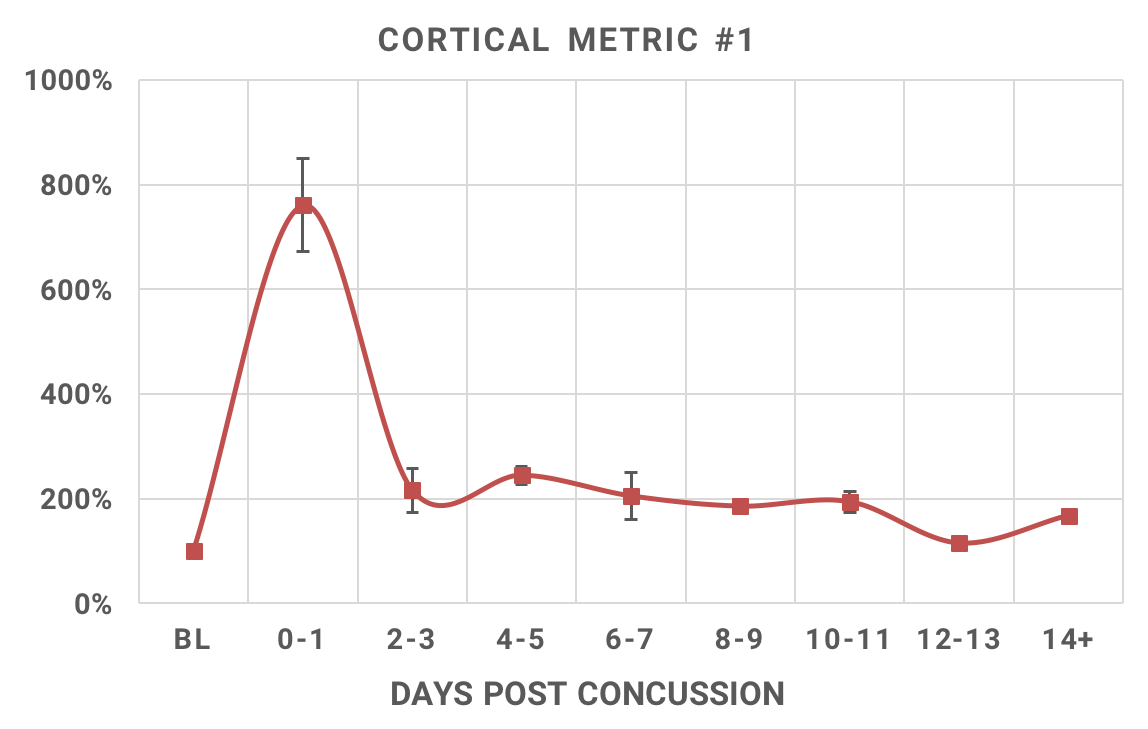
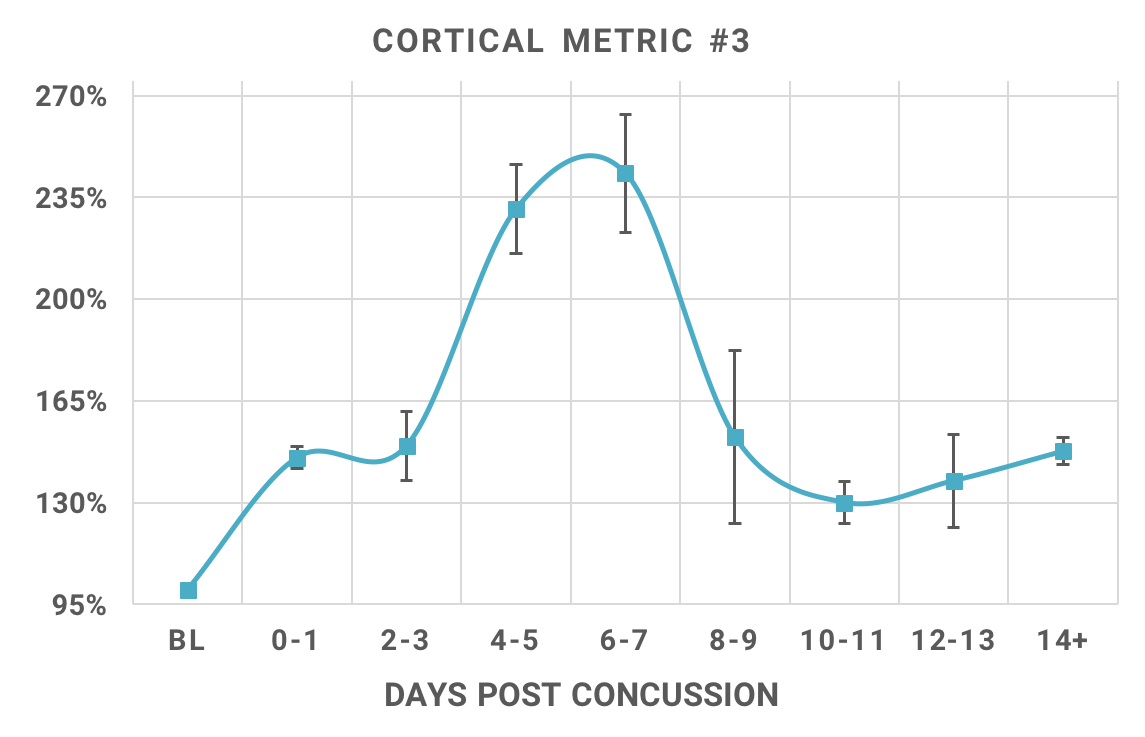
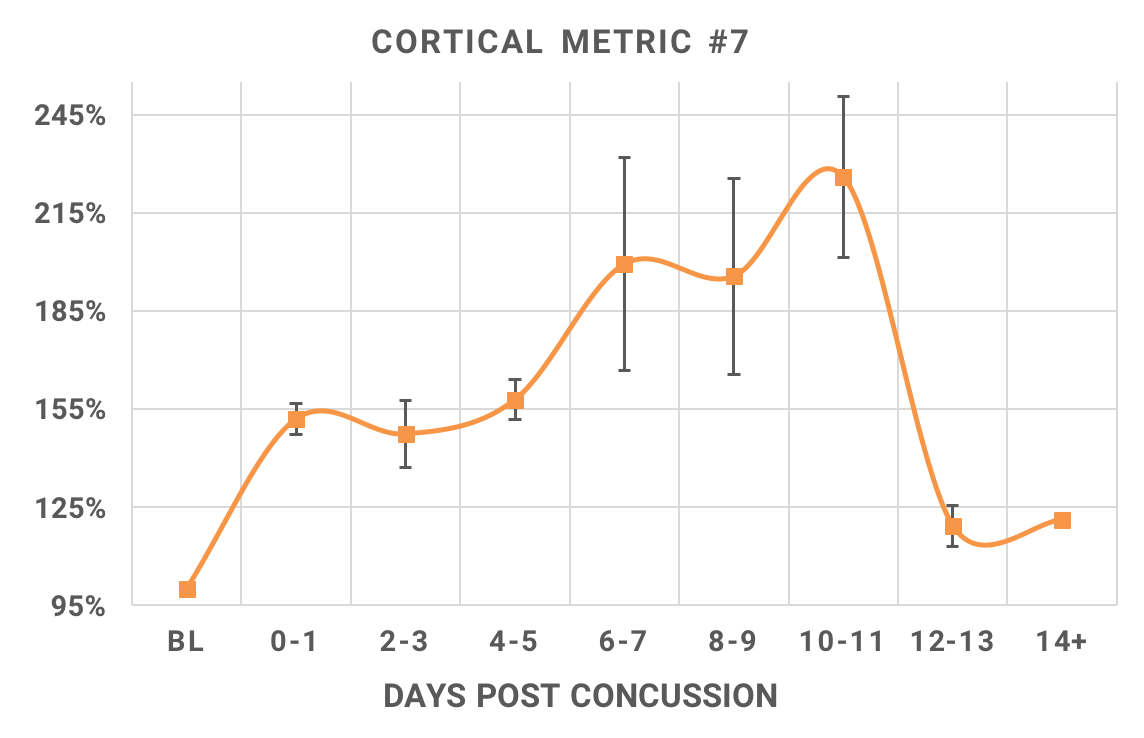
Operational significance: A short 2-3 minute Brain Gauge test could be administered to an individual for confirming insult from trauma within 24-48 hours of blast exposure or neurotraumatic event (i.e., a “GO-NO GO” paradigmn can be implemented). If a stand-down period is required, then a longer battery of tests (15-20 minutes) can be administered to ensure readiness for return-to-duty.
Scientific significance: An experimental platform has been constructed and is being used for correlating neurophysiological outcomes in rodent with human cortical metrics observations that will be effective for dosimetrically validating traumatic injury. Additional impact will be derived from this platform with applications to a wide cohort of other neurological disorders that are currently in the planning stage.
Additional information (including 50+ publications) can be found at www.corticalmetrics.com.
